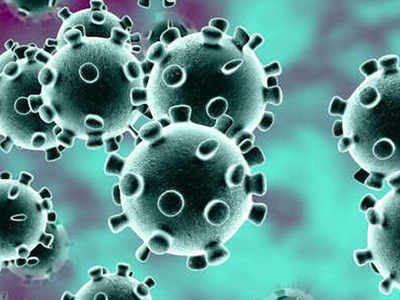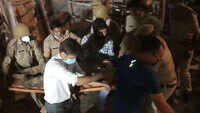
BHUBANESWAR: Analysis of Odisha samples conducted by Institute of Life Sciences (ILS) Bhubaneswar and ICMR-Regional Medical Research Centre (RMRC) Bhubaneswar showed the presence of all five reported clades- 19A, 19B, 20A, 20B and 20C of Covid-19 genome. The Clade 20C was observed in Odisha and not present any other isolates included in more than 1000 genome analysis across the country.
Five research institutions in the country including ILS Bhubaneswar have carried out analysis of 1,062 genomes from 18 Indian states. ILS and RMRC researchers have analysed 225 viral genomes of Covid-19 positive patients those who migrated from 13 Indian states. Initial results indicated that multiple lineages of SARS-CoV-2 are circulating in India, probably introduced by travel from Europe, USA and South East Asia, said the scientists.
Clade means a group having same source of origin or characteristics. Analysis of Odisha samples showed the presence of all five reported clades of Covid-19 genome. Majority of the 19A (mostly European origin source) and 19B clades (mostly South East Asian origin source) were present in the cases who had returned from Gujarat state in the month of March and April. "Clade 19B was found to be much more prevalent in analysed samples (17 per cent of total samples from the country) as compared to other genomes reported so far from India," said the researchers.
Sanghamitra Pati, director of RMRC, said it is obvious that Europe and Southeast Asia are two major routes of disease transmission in Odisha. The phylogenetic analysis (study of relationship between different strains of virus) showed that clades 20A and 20B evolved quite rapidly in the Indian population and are major source of disease transmission in the country as well as in Odisha. "Whereas 20C is rarely detected and appeared to be less adapted. Our study revealed that most of the symptomatic patients bearing the virus has clades 20A, 20B and 20C. The Clade 20C was observed in Odisha and not present any other isolates included in 1000 genome analysis in India," she added.
ILS Bhubaneswar director Ajay Kumar Parida said 20A, 20B and 20C clades have mutated from initial clades 19A and 19B. "As many as 73 of our samples have 20A clade, while 20B clade found in 60 samples. These two classes have high infection rate. But 20C is witnessed in four samples only. This one is not very infective. Because of its low infectivity rate, it is not spreading inside Odisha or outside the state," he added.
He said the study also showed occurrence of as many as 247 single nucleotide mutations from 202 SARS-CoV2 isolates. Some of these isolates have number of mutations, while some of these have very less or no mutations of the virus. For example: one isolate has 156 variants. This indicates that these strains have some selective advantage with time for increased transmission, he added.
Parida said this is a major development in understanding the disease dynamics through genomics studies. "We have used our inhouse facility to sequence 225 viral genomes collected between March and July. The sequencing, data analysis and interpretation was carried out by the team led by Sunil Raghav of ILS and Jyotirmayee Turuk of RMRC using advanced sequencing facility at ILS. This study will pave way for new avenues of research on Covid-19. Further sequencing of virus genome is being carried out at ILS using recent samples," he added.
Union minister of science and technology Harsh Vardhan has announced the completion of over 1000 Covid-19 viral genomes by the these five autonomous institutions.
Five research institutions in the country including ILS Bhubaneswar have carried out analysis of 1,062 genomes from 18 Indian states. ILS and RMRC researchers have analysed 225 viral genomes of Covid-19 positive patients those who migrated from 13 Indian states. Initial results indicated that multiple lineages of SARS-CoV-2 are circulating in India, probably introduced by travel from Europe, USA and South East Asia, said the scientists.
Clade means a group having same source of origin or characteristics. Analysis of Odisha samples showed the presence of all five reported clades of Covid-19 genome. Majority of the 19A (mostly European origin source) and 19B clades (mostly South East Asian origin source) were present in the cases who had returned from Gujarat state in the month of March and April. "Clade 19B was found to be much more prevalent in analysed samples (17 per cent of total samples from the country) as compared to other genomes reported so far from India," said the researchers.
Sanghamitra Pati, director of RMRC, said it is obvious that Europe and Southeast Asia are two major routes of disease transmission in Odisha. The phylogenetic analysis (study of relationship between different strains of virus) showed that clades 20A and 20B evolved quite rapidly in the Indian population and are major source of disease transmission in the country as well as in Odisha. "Whereas 20C is rarely detected and appeared to be less adapted. Our study revealed that most of the symptomatic patients bearing the virus has clades 20A, 20B and 20C. The Clade 20C was observed in Odisha and not present any other isolates included in 1000 genome analysis in India," she added.
ILS Bhubaneswar director Ajay Kumar Parida said 20A, 20B and 20C clades have mutated from initial clades 19A and 19B. "As many as 73 of our samples have 20A clade, while 20B clade found in 60 samples. These two classes have high infection rate. But 20C is witnessed in four samples only. This one is not very infective. Because of its low infectivity rate, it is not spreading inside Odisha or outside the state," he added.
He said the study also showed occurrence of as many as 247 single nucleotide mutations from 202 SARS-CoV2 isolates. Some of these isolates have number of mutations, while some of these have very less or no mutations of the virus. For example: one isolate has 156 variants. This indicates that these strains have some selective advantage with time for increased transmission, he added.
Parida said this is a major development in understanding the disease dynamics through genomics studies. "We have used our inhouse facility to sequence 225 viral genomes collected between March and July. The sequencing, data analysis and interpretation was carried out by the team led by Sunil Raghav of ILS and Jyotirmayee Turuk of RMRC using advanced sequencing facility at ILS. This study will pave way for new avenues of research on Covid-19. Further sequencing of virus genome is being carried out at ILS using recent samples," he added.
Union minister of science and technology Harsh Vardhan has announced the completion of over 1000 Covid-19 viral genomes by the these five autonomous institutions.
Quick Links
Kerala Coronavirus Helpline NumberHaryana Coronavirus Helpline NumberUP Coronavirus Helpline NumberBareilly NewsBhopal NewsCoronavirus in DelhiCoronavirus in HyderabadCoronavirus in IndiaCoronavirus symptomsCoronavirusRajasthan Coronavirus Helpline NumberAditya ThackerayShiv SenaFire in MumbaiAP Coronavirus Helpline NumberArvind KejriwalJammu Kashmir Coronavirus Helpline NumberSrinagar encounter
Get the app








